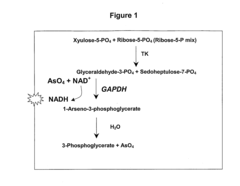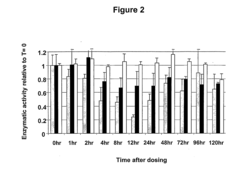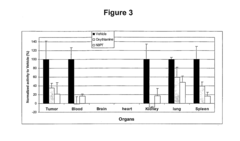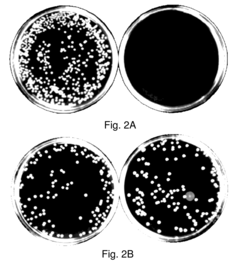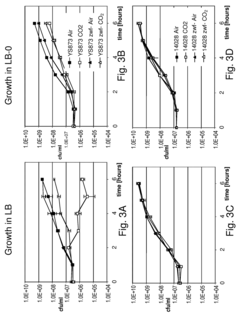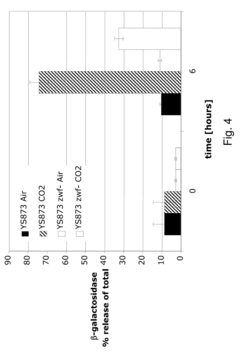Control of the Pentose Phosphate Pathway in Oxidative Balance
Research Background and Objectives
The Pentose Phosphate Pathway (PPP) has been a subject of intense scientific scrutiny since its discovery in the 1950s. This metabolic pathway, parallel to glycolysis, plays a crucial role in cellular redox balance and biosynthesis. The PPP's significance lies in its ability to generate NADPH, a key reducing agent, and ribose-5-phosphate, essential for nucleotide synthesis. As our understanding of cellular metabolism has evolved, so too has our appreciation for the PPP's central role in oxidative balance.
The control of the PPP in oxidative balance represents a critical area of research with far-reaching implications for cellular health and disease states. Oxidative stress, resulting from an imbalance between reactive oxygen species (ROS) production and antioxidant defenses, is a common feature in various pathological conditions, including cancer, neurodegenerative diseases, and aging. The PPP's capacity to produce NADPH, a cofactor for many antioxidant enzymes, positions it as a key player in maintaining cellular redox homeostasis.
Recent technological advancements in metabolomics, proteomics, and genomics have enabled researchers to delve deeper into the intricacies of PPP regulation. These tools have revealed complex interactions between the PPP and other metabolic pathways, as well as its responsiveness to various cellular stressors. The emergence of systems biology approaches has further enhanced our ability to model and predict PPP behavior under different physiological conditions.
The primary objective of current research in this field is to elucidate the precise mechanisms governing PPP flux and its modulation in response to oxidative challenges. This includes understanding the regulatory enzymes, transcription factors, and signaling pathways that influence PPP activity. Additionally, researchers aim to uncover how cells balance the competing demands for NADPH in anabolic processes versus antioxidant defense.
Another critical goal is to explore the therapeutic potential of manipulating the PPP to combat oxidative stress-related diseases. This involves identifying key control points within the pathway that could serve as targets for pharmacological intervention. The development of strategies to enhance PPP activity in conditions characterized by excessive oxidative stress, or to inhibit it in cases where uncontrolled PPP flux contributes to pathology, represents a promising avenue for novel therapeutic approaches.
As we look to the future, the field is poised for significant breakthroughs in our understanding of PPP control and its implications for cellular health. The integration of advanced analytical techniques with computational modeling promises to yield unprecedented insights into the dynamic regulation of this crucial metabolic pathway. These advancements will not only enhance our fundamental knowledge of cellular metabolism but also pave the way for innovative strategies to maintain oxidative balance in health and disease.
Market Analysis for PPP-Related Therapeutics
The market for therapeutics related to the Pentose Phosphate Pathway (PPP) is experiencing significant growth, driven by the increasing understanding of the pathway's role in oxidative balance and cellular metabolism. This market segment is primarily focused on developing treatments for diseases associated with oxidative stress, including cancer, neurodegenerative disorders, and metabolic diseases.
The global market for PPP-related therapeutics is currently valued in the billions of dollars, with projections indicating substantial growth over the next decade. This growth is fueled by the rising prevalence of chronic diseases and the aging population, both of which contribute to increased oxidative stress and metabolic imbalances.
Cancer therapeutics represent the largest segment within the PPP-related market. The ability to modulate the PPP offers potential strategies for targeting cancer cell metabolism, as many cancer cells rely heavily on this pathway for survival and proliferation. Several pharmaceutical companies are investing in research and development of drugs that target key enzymes in the PPP, such as glucose-6-phosphate dehydrogenase (G6PD) inhibitors.
Neurodegenerative disorders, including Alzheimer's and Parkinson's diseases, form another significant market segment. The PPP plays a crucial role in maintaining neuronal health by providing NADPH for antioxidant defense. Therapeutics aimed at enhancing PPP activity in neurons are gaining traction, with several compounds in various stages of clinical trials.
The metabolic disease segment, encompassing diabetes and obesity, is also showing promise for PPP-related therapeutics. Modulation of the PPP could potentially improve insulin sensitivity and glucose homeostasis, offering new avenues for treatment beyond traditional approaches.
Geographically, North America and Europe currently dominate the market due to advanced healthcare infrastructure and higher research and development investments. However, the Asia-Pacific region is expected to show the fastest growth rate in the coming years, driven by improving healthcare access and increasing awareness of metabolic disorders.
Key market players include major pharmaceutical companies as well as specialized biotechnology firms. These companies are engaged in various stages of drug development, from preclinical research to late-stage clinical trials. Collaborations between academic institutions and industry partners are also becoming more prevalent, accelerating the pace of innovation in this field.
Despite the promising outlook, challenges remain in the PPP-related therapeutics market. These include the complexity of targeting specific enzymes without disrupting overall cellular metabolism, potential side effects due to the pathway's ubiquitous nature, and the need for long-term safety data. Regulatory hurdles and the high cost of drug development also pose significant barriers to market entry.
Current Challenges in PPP Regulation
The regulation of the Pentose Phosphate Pathway (PPP) in oxidative balance faces several significant challenges. One of the primary issues is the complex interplay between the PPP and other metabolic pathways, particularly glycolysis and the tricarboxylic acid (TCA) cycle. This interconnectedness makes it difficult to isolate and control the PPP without affecting other crucial cellular processes.
Another major challenge lies in the dynamic nature of cellular redox states. The PPP plays a critical role in maintaining the NADPH/NADP+ ratio, which is essential for cellular antioxidant defense and biosynthetic processes. However, the rapid fluctuations in cellular redox status due to various environmental and metabolic factors make it challenging to achieve precise control over the pathway's activity.
The compartmentalization of PPP enzymes within different cellular organelles further complicates regulation efforts. While the oxidative branch of the PPP is primarily localized in the cytosol, some enzymes are also found in peroxisomes and plastids in plant cells. This spatial distribution creates additional layers of complexity in coordinating pathway activity across different cellular compartments.
Moreover, the dual role of the PPP in both energy metabolism and biosynthesis presents a regulatory challenge. The pathway must be finely tuned to balance the cell's needs for ribose-5-phosphate (essential for nucleotide synthesis) and NADPH (crucial for reductive biosynthesis and oxidative stress defense). Achieving this balance requires sophisticated regulatory mechanisms that can respond to varying cellular demands.
The genetic and epigenetic regulation of PPP enzymes adds another layer of complexity. Transcriptional and post-translational modifications of key enzymes like glucose-6-phosphate dehydrogenase (G6PD) can significantly impact pathway flux. Understanding and manipulating these regulatory mechanisms without disrupting other cellular processes remains a significant challenge.
Furthermore, the PPP's role in different cell types and physiological states varies considerably. For instance, its activity is heightened in rapidly proliferating cells, such as cancer cells, compared to quiescent cells. Developing targeted approaches to modulate PPP activity in specific cell types or disease states without affecting normal cellular function is a major hurdle in pathway regulation.
Lastly, the development of accurate and real-time monitoring tools for PPP activity in living cells remains a technical challenge. Current methods often rely on endpoint measurements or disruptive techniques, limiting our ability to observe and control the pathway's dynamics in real-time under physiological conditions.
Existing Pentose Phosphate Pathway Control Strategies
01 Genetic engineering of microorganisms for enhanced pentose phosphate pathway
Genetic modification techniques are used to enhance the pentose phosphate pathway in microorganisms. This involves altering genes related to key enzymes in the pathway to improve the oxidative balance and increase the production of desired metabolites. These modifications can lead to improved efficiency in biofuel production and other biotechnological applications.- Modulation of pentose phosphate pathway enzymes: Techniques for modulating enzymes involved in the pentose phosphate pathway to maintain oxidative balance. This includes methods for altering the expression or activity of key enzymes such as glucose-6-phosphate dehydrogenase and 6-phosphogluconate dehydrogenase, which play crucial roles in NADPH production and oxidative stress management.
- Genetic engineering for enhanced pentose phosphate pathway flux: Strategies involving genetic modification of organisms to enhance the flux through the pentose phosphate pathway. This includes overexpression of key enzymes, deletion of competing pathways, and introduction of heterologous genes to improve NADPH generation and maintain redox balance in various biotechnological applications.
- Metabolic engineering for improved oxidative stress resistance: Approaches to engineer cellular metabolism for enhanced oxidative stress resistance through the pentose phosphate pathway. This involves redirecting metabolic fluxes, optimizing cofactor regeneration, and improving the overall antioxidant capacity of cells to maintain redox homeostasis under various environmental conditions.
- Integration of pentose phosphate pathway with other metabolic pathways: Methods for integrating the pentose phosphate pathway with other metabolic pathways to optimize cellular redox balance. This includes coordinating the pentose phosphate pathway with glycolysis, the TCA cycle, and various biosynthetic pathways to ensure efficient NADPH production and utilization in response to cellular demands.
- Regulation of pentose phosphate pathway in response to oxidative stress: Mechanisms and strategies for regulating the pentose phosphate pathway in response to oxidative stress. This involves understanding and manipulating signaling pathways, transcription factors, and post-translational modifications that control the activity of pentose phosphate pathway enzymes to maintain cellular redox balance under various stress conditions.
02 Regulation of NADPH/NADP+ ratio in the pentose phosphate pathway
Methods for regulating the NADPH/NADP+ ratio in the pentose phosphate pathway are developed to maintain oxidative balance. This involves controlling the activity of enzymes such as glucose-6-phosphate dehydrogenase and 6-phosphogluconate dehydrogenase. Maintaining this balance is crucial for cellular redox homeostasis and efficient carbon flux through the pathway.Expand Specific Solutions03 Integration of pentose phosphate pathway with other metabolic pathways
Strategies are developed to integrate the pentose phosphate pathway with other metabolic pathways to optimize overall cellular metabolism. This involves coordinating the flux between glycolysis, the pentose phosphate pathway, and the TCA cycle to achieve desired metabolic outcomes. Such integration can lead to improved production of valuable compounds in industrial biotechnology.Expand Specific Solutions04 Modulation of pentose phosphate pathway for stress tolerance
Techniques are developed to modulate the pentose phosphate pathway to enhance cellular stress tolerance. This involves upregulating the oxidative phase of the pathway to increase NADPH production, which is crucial for counteracting oxidative stress. Such modulation can improve the robustness of microorganisms in various biotechnological applications.Expand Specific Solutions05 Metabolic engineering for enhanced pentose utilization
Metabolic engineering approaches are used to enhance pentose utilization through the pentose phosphate pathway. This involves introducing or modifying genes for pentose transport and metabolism, as well as optimizing the balance between the oxidative and non-oxidative branches of the pathway. These strategies can improve the efficiency of bioprocesses using lignocellulosic feedstocks.Expand Specific Solutions
Key Players in Pentose Phosphate Pathway Research
The control of the Pentose Phosphate Pathway in oxidative balance is a mature field of research, with significant market potential in pharmaceutical and biotechnology sectors. The industry is in a growth phase, driven by increasing focus on metabolic disorders and cancer therapies. Key players like BASF SE, GlaxoSmithKline LLC, and Bristol Myers Squibb Co. are investing heavily in R&D, indicating a competitive landscape. Academic institutions such as Columbia University and Zhejiang University are contributing to technological advancements. The market size is expanding, with emerging companies like Provivi, Inc. and DepYmed, Inc. entering the space, suggesting ongoing innovation and commercialization opportunities in this critical area of cellular metabolism.
BASF SE
Ajinomoto Co., Inc.
Core Innovations in Pentose Phosphate Pathway Regulation
- A fluorescence-based assay that measures the enzymatic activities of these enzymes in cell lysates, tissues, and blood, providing increased sensitivity and convenience by eliminating the need for enzyme isolation and reducing sample manipulation, allowing for high-throughput analysis.
- Development of genetically stable, attenuated Salmonella strains resistant to CO2, acidic pH, and osmolarity, expressing avian influenza antigens optimized for bacterial expression, with mutations in the msbB and zwf genes to enhance survival and immune response, and deletion of IS200 elements to reduce genetic recombination.
Metabolic Engineering Approaches
Metabolic engineering approaches have emerged as powerful tools for controlling the pentose phosphate pathway (PPP) in oxidative balance. These strategies aim to optimize the flux through the PPP to enhance NADPH production and improve cellular redox homeostasis. One key approach involves overexpressing key enzymes in the oxidative branch of the PPP, such as glucose-6-phosphate dehydrogenase (G6PDH) and 6-phosphogluconate dehydrogenase (6PGDH). This increases the overall flux through the pathway, leading to higher NADPH generation.
Another effective strategy is the modulation of transcription factors that regulate PPP genes. For instance, engineering the expression of transcriptional regulators like Zwf1 in yeast or SoxS in bacteria can upregulate multiple PPP enzymes simultaneously, providing a more coordinated control over the pathway. Additionally, researchers have explored the use of synthetic biology techniques to create artificial regulatory circuits that can dynamically adjust PPP flux in response to cellular redox states.
Metabolic engineers have also focused on redirecting carbon flux towards the PPP by manipulating competing pathways. This can be achieved by downregulating enzymes in glycolysis or the TCA cycle, effectively channeling more glucose-6-phosphate into the PPP. For example, attenuating phosphofructokinase activity can increase the availability of glucose-6-phosphate for the oxidative PPP branch.
Recent advancements in genome editing technologies, such as CRISPR-Cas9, have enabled more precise and efficient modifications of PPP-related genes. This has allowed for fine-tuning of enzyme expression levels and the introduction of beneficial mutations that enhance pathway efficiency. Moreover, adaptive laboratory evolution techniques have been employed to select for strains with improved PPP performance under oxidative stress conditions.
Metabolic modeling and flux analysis have played crucial roles in guiding these engineering efforts. By constructing genome-scale metabolic models and performing flux balance analysis, researchers can predict the effects of genetic modifications on PPP flux and overall cellular metabolism. This in silico approach helps to identify promising targets for manipulation and optimize engineering strategies before experimental implementation.
Lastly, the integration of PPP engineering with other cellular processes has shown promising results. For instance, coupling PPP enhancement with strategies to improve cofactor regeneration or antioxidant defense systems can create synergistic effects in maintaining oxidative balance. These holistic approaches recognize the interconnected nature of cellular metabolism and aim to create more robust and efficient cellular systems for biotechnological applications.
Biomarkers for Pentose Phosphate Pathway Activity
Biomarkers for PPP activity serve as crucial indicators for assessing the functionality and regulation of the pentose phosphate pathway (PPP) in cellular metabolism. These markers provide valuable insights into the oxidative balance and metabolic state of cells, particularly in the context of redox homeostasis and biosynthetic processes.
One of the primary biomarkers for PPP activity is the ratio of NADPH to NADP+. The PPP is a major source of NADPH production, which is essential for maintaining cellular redox balance and supporting various anabolic reactions. An increased NADPH/NADP+ ratio typically indicates heightened PPP activity, reflecting the cell's response to oxidative stress or increased demand for reducing power.
Glucose-6-phosphate dehydrogenase (G6PD) activity is another key biomarker for PPP flux. As the rate-limiting enzyme of the oxidative branch of the PPP, G6PD catalyzes the first and irreversible step of the pathway. Elevated G6PD activity often correlates with increased PPP flux and enhanced NADPH production, making it a reliable indicator of pathway activation.
The levels of PPP intermediates, such as 6-phosphogluconate and ribose-5-phosphate, can also serve as biomarkers for pathway activity. Accumulation of these metabolites may indicate increased flux through the PPP or potential bottlenecks in downstream processes. Additionally, the ratio of labeled to unlabeled metabolites in isotope tracing experiments can provide detailed information about PPP flux and its contribution to cellular metabolism.
Transcriptional and post-translational modifications of PPP enzymes offer another layer of biomarker information. Changes in mRNA expression or protein levels of key PPP enzymes, including transketolase and transaldolase, can reflect alterations in pathway regulation and capacity. Furthermore, post-translational modifications, such as phosphorylation or acetylation of these enzymes, may indicate acute modulation of PPP activity in response to cellular signals or environmental cues.
The measurement of PPP-derived metabolites in extracellular fluids, such as blood or urine, presents an opportunity for non-invasive monitoring of pathway activity. For instance, elevated levels of erythrose-4-phosphate or sedoheptulose-7-phosphate in these biofluids may indicate systemic changes in PPP flux, potentially serving as diagnostic or prognostic markers for certain metabolic disorders or disease states.

